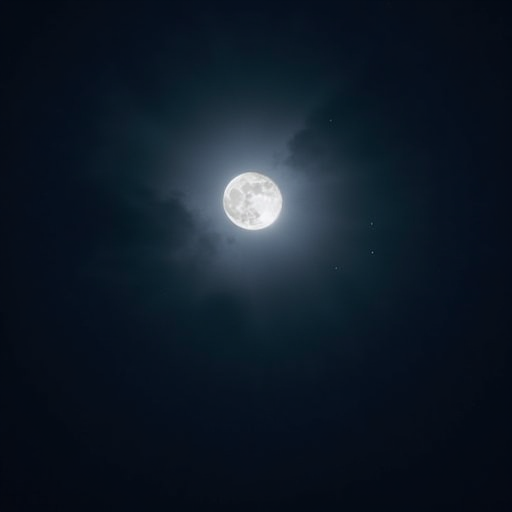
Why is the Moon White?
The Moon, Earth's only natural satellite, has been a subject of fascination and intrigue for centuries. One of the most common questions people ask is, "Why is the Moon white?" While the Moon isn't always white—it can appear yellow, orange, or even red during certain phases and phenomena—its most familiar color to many observers is indeed a bright, silvery white. This article explores the reasons behind the Moon's white appearance and how various factors contribute to the colors we see.
Composition and Surface Reflectivity
Lunar Surface Materials
The Moon's surface is primarily composed of a type of rock called anorthosite, which is rich in a mineral called plagioclase feldspar. This mineral is light in color and has a high albedo, meaning it reflects a significant amount of sunlight. The presence of anorthosite is a major factor in the Moon's bright appearance.
Other materials contributing to the Moon's surface include basalt, which is found in the lunar maria or "seas." While basalt is darker than anorthosite, the overall mix of surface materials maintains a light color when viewed from Earth.
Regolith and Micrometeorite Impacts
The Moon is covered in a layer of fine dust and rocky debris called regolith. This layer results from billions of years of micrometeorite impacts that pulverize surface rocks. The regolith reflects sunlight efficiently, contributing to the Moon's bright appearance.
Interaction with Sunlight
Sunlight Reflection
The Moon does not generate its own light; it shines by reflecting sunlight. The Sun emits white light, which is a mix of all colors in the visible spectrum. When this sunlight reaches the Moon, it is reflected off the lunar surface and scattered in all directions. The high reflectivity of the lunar surface materials ensures that a significant amount of this light is directed back toward Earth, making the Moon appear bright and white.
Absence of Atmosphere
Unlike Earth, the Moon lacks an atmosphere. This absence means there is no scattering of sunlight by air molecules—a process that makes the sky blue on Earth. Without atmospheric scattering, the sunlight reflected from the Moon’s surface maintains its original color, contributing to the Moon's white appearance as seen from Earth.
Viewing Conditions on Earth
Angle of Reflection
The angle at which sunlight hits the Moon and reflects toward Earth also affects its perceived color. When the Moon is high in the sky, the light path through Earth's atmosphere is shorter, and the Moon appears whiter and brighter. Conversely, when the Moon is near the horizon, its light passes through a thicker layer of Earth's atmosphere, which can scatter shorter wavelengths (blue and green light) and make the Moon appear yellow, orange, or red.
Atmospheric Conditions
Environmental factors such as pollution, humidity, and dust can influence the color of the Moon as seen from Earth. These conditions can scatter light and alter the perceived color, but generally, under clear skies, the Moon retains its bright, white appearance.
Lunar Phases and Eclipses
Full Moon
During a full moon, the entire face of the Moon is illuminated by the Sun, making it appear its brightest and whitest. This is the phase when the Moon's appearance is most commonly associated with the term "white."
Lunar Eclipses
During a lunar eclipse, the Earth comes between the Sun and the Moon, casting a shadow on the lunar surface. This can cause the Moon to appear reddish—a phenomenon known as the "blood moon." During these times, the Moon is temporarily not white, as the Earth's atmosphere filters and scatters sunlight passing through it.
Conclusion
The Moon appears white primarily due to the properties of its surface materials, which reflect sunlight efficiently, combined with the absence of an atmosphere that would otherwise alter its color. While atmospheric conditions and viewing angles can influence its perceived color, the Moon's iconic white appearance remains a constant in the night sky for many stargazers. Understanding these factors enhances our appreciation of the Moon's beauty and the complex interactions of light and celestial bodies.
